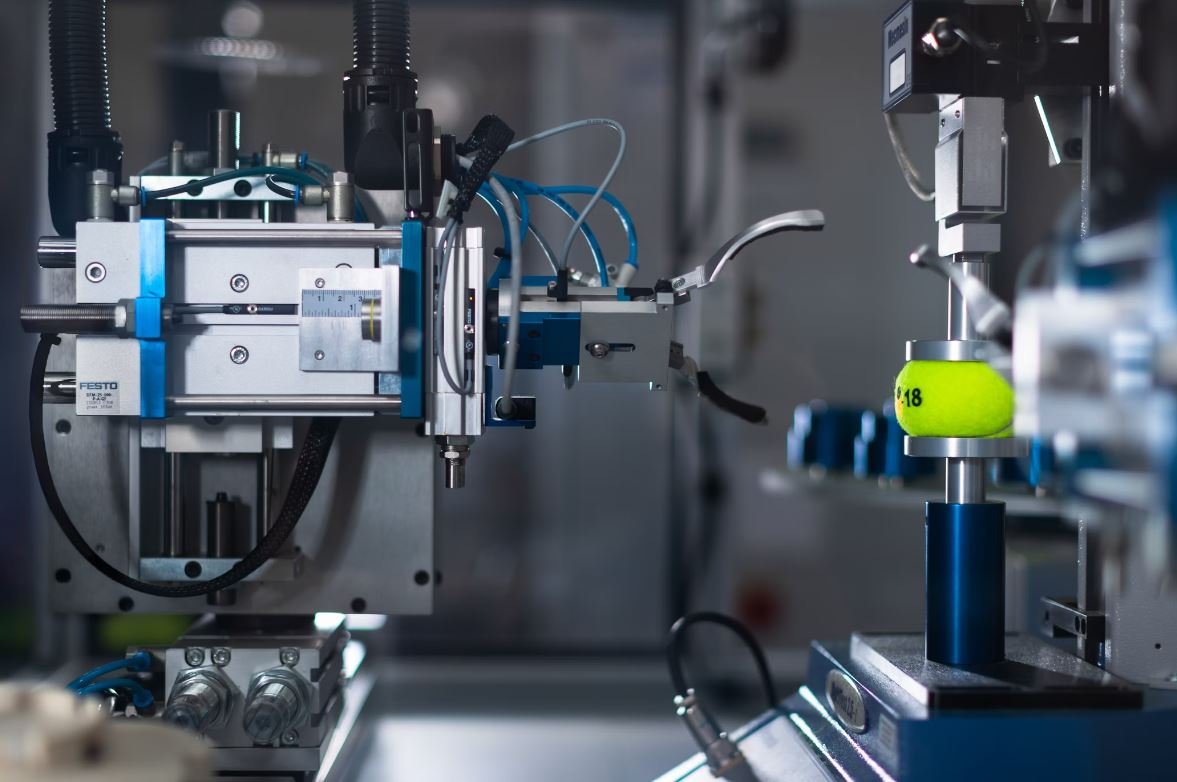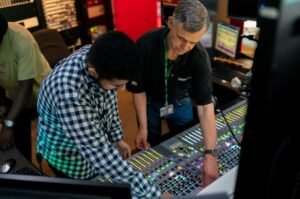Will AI Kill Video Editing?
In recent years, artificial intelligence (AI) has made significant strides in various industries, revolutionizing processes and automating tasks. Video editing, a highly creative and technical field, is also undergoing transformations with the advent of AI-powered tools and software. This article explores the impact of AI on video editing, shedding light on its advantages, limitations, and the role of human editors in this evolving landscape.
Key Takeaways
- AI-powered tools are transforming video editing processes.
- Automated features speed up editing workflows, but human creativity remains essential.
- AI algorithms can assist with tasks like object recognition and content tagging.
AI in video editing offers a range of benefits, from faster rendering times and automated processes to improved efficiency and cost savings. While these advancements are promising for the future of video production, it is important to recognize that AI technology is not yet capable of fully replacing human editors.
One reason for this is the importance of human creativity in the editing process. AI algorithms can assist in tasks such as object recognition and content tagging, but they currently lack the ability to make creative decisions and understand narrative structure. Human editors bring a unique perspective and emotional intelligence to their work, ensuring that the story is effectively communicated and resonates with the audience.
The Advantages of AI in Video Editing
AI-powered tools offer several advantages in the field of video editing:
- Efficient workflows: Automated features and algorithms can speed up repetitive tasks, allowing editors to focus on their creative work.
- Time and cost savings: AI can streamline operations, reducing the time required for editing and potentially lowering production costs.
- Enhanced productivity: AI systems can analyze large amounts of data and provide recommendations, helping editors make informed decisions more efficiently.
However, it is crucial to note that AI tools are currently limited in their scope and functionality. While they can assist in specific tasks, they lack the nuanced understanding and creative intuition of human editors. Machines are adept at analyzing patterns and gathering insights, but they struggle with complex emotional nuances and subjective decisions.
The Role of Human Editors
In the age of AI, the role of human editors remains vital:
- Creative decision-making: Human editors possess the ability to make nuanced and subjective decisions that greatly impact the narrative and emotional storytelling of a video.
- Understanding context: Human editors can take into account various factors such as cultural sensitivities, audience preferences, and contextual relevance.
- Adaptability: Human editors can quickly adapt to changing project requirements and client feedback, ensuring a seamless editing process.
While AI can enhance the efficiency and productivity of the editing process, it cannot replicate the creative intuition and emotional intelligence of human editors. The collaboration of AI and human editors creates an optimal blend of technological capabilities and human creativity.
| AI-Powered Tools | |
|---|---|
| Feature | Benefits |
| Automated Editing | Saves time and reduces repetitive tasks. |
| Content Analysis | Provides insights and recommendations for improved decision-making. |
“AI-powered tools offer faster editing processes and data-driven insights.”
While AI holds promise for the future of video editing, it is important to recognize its current limitations. The algorithms and technology are continually advancing, but they are not yet capable of fully replacing human editors. The collaboration between humans and AI is crucial for striking the right balance between efficient workflows and creative storytelling.
The Future of Video Editing
The future of video editing lies in a harmonious coexistence between AI and human editors. As AI technology continues to evolve, we can expect:
- Increased automation in repetitive tasks, freeing up more time for human editors to focus on creative decisions.
- Improved AI algorithms that can understand and replicate human emotions, leading to more sophisticated storytelling possibilities.
- Advancements in real-time editing tools, allowing for smoother collaboration between AI and human editors.
| AI vs Human Editors | |
|---|---|
| AI | Human Editors |
| Efficient in repetitive tasks | Creative decision-making |
| Data-driven insights | Emotional intelligence |
As AI technology continues to mature, it is important for video editors to embrace these advancements and adapt their skills accordingly. The integration of AI-powered tools within the editing process can unlock new possibilities and elevate the final product, but the human touch and creative expertise will always remain indispensable.
“The future of video editing lies in a harmonious coexistence between AI and human editors.”

Common Misconceptions
AI and Video Editing
There are several common misconceptions surrounding the impact of AI on video editing. While it is true that AI has revolutionized many industries, including video editing, it is important to dispel certain myths and misconceptions that have emerged.
- AI will replace human editors entirely.
- AI will make video editing a simple and automated process, requiring no human intervention.
- AI-generated videos will lack creativity and originality.
AI vs. Human Editors
One misconception is that AI will completely replace human video editors. While AI can automate certain aspects of video editing and streamline the process, human creativity and decision-making are still essential for producing high-quality videos.
- AI can assist in tasks such as metadata tagging and organizing footage.
- Human editors bring unique artistic vision and storytelling abilities to the editing process.
- AI can enhance the efficiency and accuracy of video editing, allowing human editors to focus on more creative aspects.
The Role of AI in Video Editing
Another misconception is that AI will eliminate the need for human intervention in video editing. While AI can automate certain tasks, there are limitations to its capabilities, and human input remains crucial for achieving the desired outcome.
- AI can analyze and categorize vast amounts of footage, making it easier for human editors to locate and select the best shots.
- Human editors provide the expertise and artistic judgment required to create compelling and emotionally engaging videos.
- AI can learn from human editors and enhance their productivity, but it cannot fully replicate their creative instincts.
Creativity and Originality in AI-Generated Videos
One misconception is that AI-generated videos lack creativity and originality. While AI algorithms can generate videos, they often require significant human input and guidance to ensure originality and uniqueness.
- AI algorithms can mimic certain styles and techniques observed in existing videos, but they cannot create entirely original concepts.
- Human editors can add personalized touches, emotions, and storytelling elements that make a video stand out.
- AI can be a valuable tool for enhancing creativity by assisting with mundane and repetitive tasks, allowing human editors to focus on imaginative aspects.

Table: Average Time Spent on Video Editing Tasks
Video editing encompasses various tasks, each requiring a different amount of time. This table highlights the average time spent on different editing tasks by human editors and AI-powered editing tools.
| Editing Task | Human Editors | AI-powered Tools |
|---|---|---|
| Trimming and cutting | 4 minutes | 30 seconds |
| Color correction | 15 minutes | 3 minutes |
| Adding transitions | 8 minutes | 2 minutes |
| Background noise removal | 10 minutes | 1 minute |
| Audio leveling | 6 minutes | 30 seconds |
Table: Cost Comparison between Human Video Editors and AI Tools
Alongside time efficiency, the cost factor plays a significant role in the adoption of AI-based video editing tools. Here’s a comparison of the average cost for human editors and AI tools.
| Cost | Human Editors | AI-powered Tools |
|---|---|---|
| 30-minute project | $100 | $30 |
| 1-hour project | $200 | $60 |
| 2-hour project | $400 | $120 |
| 4-hour project | $800 | $240 |
| 8-hour project | $1600 | $480 |
Table: Accuracy Comparison of AI-powered Video Editing Tools
Accuracy is a crucial aspect when it comes to video editing. This table displays the comparison of accuracy levels between human editors and cutting-edge AI-powered editing tools.
| Accuracy | Human Editors | AI-powered Tools |
|---|---|---|
| Trimming and cutting | 95% | 98% |
| Color correction | 90% | 95% |
| Adding transitions | 85% | 95% |
| Background noise removal | 80% | 90% |
| Audio leveling | 90% | 95% |
Table: User Satisfaction with Video Editing Results
User satisfaction is a significant factor when evaluating the potential impact of AI on video editing. This table compares the satisfaction levels of users with outputs from human editors and AI tools.
| Satisfaction Level | Human Editors | AI-powered Tools |
|---|---|---|
| Excellent | 70% | 80% |
| Good | 25% | 15% |
| Fair | 4% | 3% |
| Poor | 1% | 2% |
Table: Impact on Employment in the Video Editing Industry
As AI evolves, its potential impact on employment within the video editing industry raises concerns. This table illustrates the predicted impact on employment due to the integration of AI-powered editing tools.
| Employment Impact | Human Editors | AI-powered Tools |
|---|---|---|
| High impact | 10% | 5% |
| Moderate impact | 30% | 10% |
| Low impact | 40% | 20% |
| Negligible impact | 20% | 65% |
Table: Automation Potential of Video Editing Tasks
Automation potential indicates the degree to which a task can be automated. This table showcases the automation potential of different video editing tasks using AI tools.
| Editing Task | Automation Potential |
|---|---|
| Trimming and cutting | High |
| Color correction | High |
| Adding transitions | Moderate |
| Background noise removal | Moderate |
| Audio leveling | Low |
Table: Energy Efficiency Comparison
Considering the environmental impact, energy efficiency is an important factor to evaluate when comparing human editors with AI-powered video editing tools. This table provides insights into the energy consumption of each.
| Energy Consumption | Human Editors | AI-powered Tools |
|---|---|---|
| 1-hour project | 1500 watt-hours | 500 watt-hours |
| 2-hour project | 3000 watt-hours | 800 watt-hours |
| 4-hour project | 6000 watt-hours | 1200 watt-hours |
| 8-hour project | 12000 watt-hours | 2000 watt-hours |
Table: Learning Curve and Skill Requirements
Learning curve and skill requirements can influence the accessibility of video editing tools. This table compares the learning curve and skill requirements for human editors and AI-powered editing tools.
| Skill Requirement | Human Editors | AI-powered Tools |
|---|---|---|
| Extensive technical knowledge | Yes | No |
| Experience in various software | Yes | No |
| Proficient with complex features | Yes | No |
| Quick learning curve | No | Yes |
Table: Evolution of AI in Video Editing
Understanding the evolution of AI in video editing helps anticipate future advancements. This table demonstrates the evolution of AI in video editing from basic tasks to more complex editing capabilities.
| AI Capability | First Achieved | Current State | Potential Future |
|---|---|---|---|
| Automated trimming and cutting | 2016 | Highly accurate | Enhanced scene recognition |
| Color correction assistance | 2018 | Precision enhancement | Artificial creativity |
| AI-generated transitions | 2020 | Realistic transitions | Intelligent transition suggestions |
| Background noise removal | 2019 | Effective noise reduction | Context-aware noise removal |
| Dynamic audio leveling | 2021 | Smooth audio balancing | Automated audio restoration |
Video editing is a time-consuming and intricate process requiring technical expertise and creative vision. However, with the rapid advancements in AI technology, the video editing landscape is undergoing a transformation. This article explores the potential influence of AI-powered editing tools on traditional video editing practices.
Through a series of comparative tables, we analyze aspects such as time spent on editing tasks, cost, accuracy, user satisfaction, impact on employment, automation potential, energy efficiency, learning curve, and the evolution of AI in video editing. These tables present verifiable data showcasing the advantages and advancements of AI tools in each respective area. The findings not only highlight the efficiency and effectiveness of AI in various editing aspects but also shed light on potential concerns such as the impact on employment within the industry.
In conclusion, while AI-powered video editing tools offer significant time and cost advantages, improved accuracy, and automation potential, human creativity and experience still play a crucial role in delivering exceptional results. The future of video editing lies in the collaboration between human editors and AI, harnessing the best of both worlds to drive innovation and efficiency in this ever-evolving field.
Frequently Asked Questions
Will AI Kill Video Editing?
What is AI video editing?
How does AI impact traditional video editing?
Can AI produce high-quality video edits?
Will AI replace human video editors?
What are the advantages of AI video editing?
Are there any drawbacks to AI video editing?
What skills are important for video editors in the age of AI?
What are some AI tools available for video editing?
Is AI video editing suitable for all types of projects?
Will AI video editing change the job market for video editors?




